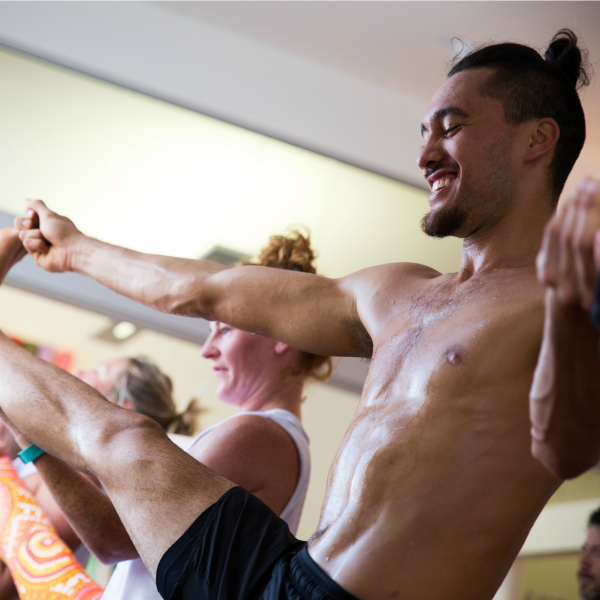25 May 3 Simple But Tremendous Benefits Of Pranayama

Yoga, to many of us, is most likely considered just the asana, the physical practice that we all do on our mats. However, you might have already come across a few yogic breathing techniques, Pranayama, through which your teacher guides you at the beginning of your yoga class. The breath is one of the most powerful tools in your practice; however we often overlook it in modern yoga. You can reset your body and mind through Pranayama. And there is so much more to it than that. So let’s delve into what Pranayama is and why you should incorporate it into your yoga practice.
Adding Pranayama to your yoga and meditation practice can help you stay healthy in mind, body, and spirit. In the yoga tradition, it says that the breath carries the person’s life force. It helps to cleanse, balance, and purify your vital life force.
So what is Pranayama?
Pranayama is Sanskrit for breath extension or control.
Prana means life force or breath sustaining the body;
Ayama translates as “to extend or draw out.”
If you are new to Pranayama, you might find it a bit boring in the beginning. All you do is usually sit in sukhasana and breathe. Agreed, with the physical practice you might feel like you accomplished much more. However, never underestimate the power of your breath. We never really pay attention to our breath, we do it on auto-pilot most of the time. But have you ever paid attention to what happens with your breath and, therefore, your whole being when you are super stressed out or anxious? Your breathing usually becomes irregular or irritated. Then you take a few deep conscious breaths. And you instantly feel calmer, more present; you can see more clearly, right? Yes, that is what your breath does for you, in a nutshell. It resets your nervous system, helping you to tune out of a stress response. And while that in itself is hugely healing for so many of us, that’s just for starters.
How to practice Pranayama.
There are as many approaches to Pranayama as there are to the practice of asana. There are different breathing techniques, and each one has its purpose. You might already be familiar with Ujjayi breath (the breath of victory) that quietens the mind and evens out the flow of breath. Another few you might have heard of or practised in class recently are Nadi Shodhana Pranayama (alternate nostril breathing) that will lower your heart rate and reduce stress and anxiety. The more advanced practice of Kapalabhati Pranayama (breath of fire) which is a traditional internal purification practice, tones and cleanses the respiratory system by encouraging the release of toxins and waste matter. It is very potent. These three are perhaps the most familiar to most people, but there are plenty more to explore.
Let’s continue to the three benefits why you should incorporate Pranayama into your yoga practice.
Three reasons to practice Pranayama.
1. Experience a new way of mindfulness.
As already mentioned, Pranayama is usually overlooked in our modern yoga practice. However, it offers so many valuable insights you might miss if you’re practising asana only. Quietness, stillness, and subtlety are much easier to glimpse and grasp in Pranayama than they are in our physical practice. Although beneficial in many ways, the physical practice can also be a distraction. We all know that once we stop and have to be still, it can get quite uncomfortable sometimes. The best example of this is savasana and also, sitting down in Pranayama, when the apparent physical movement of the body is gone, and you can now concentrate on more inner qualities.
2. Your energy quickly balances and stabilizes.
When life feels overwhelming or unbalanced, a pranayama session is often the best choice when you need to calm your nervous system or when you are in need of a quick boost of energy. It gives you an almost-immediate result. There’s a breathing pattern that will help, and usually, just three minutes will do the trick. Long term, the practice can help with all sorts of things, including anxiety, stress, depression, insomnia, improved focus, and, of course, increased self-awareness.
3. A kind of meditation practice.
Pranayama offers similar moments of presence and focuses as your meditation practice. You are, therefore, making it a worthy option for those times when you just can’t calm your monkey mind. And often, the focus involved with manipulating the breath can be just what it takes to slip into a meditative state effortlessly. It might even be a more beneficial substitute for your asana practice some days.
So by practising Pranayama, you are clearing the obstacles in our bodies, allowing breath and energy to flow freely. Your breathing improves, your bodies function better, and you’ll nurture a clear and calm mind. Pranayama is powerful, and although it might take some time to get used to it, you’ll never regret it afterwards. You’ll see the quickest and most noticeable results whenever you might find yourself feeling anxious or off-centre. After incorporating Pranayama into your practice or even as a standalone practice, you’ll begin to notice that you will feel more grounded and more in touch with the pulses of your breath, body, and mind. The change might not seem all that dramatic but, over time, you will become appreciate these quieter qualities —and not just on the micro-level of your practice, but on the macro-level of your whole life.
Simple breathing exercise for you.
Keen to try out some breathing exercise now and see for yourself the effect it has on you. Head over to Power Living’s online yoga studio, yogaholics, and let Troy Abraham guide you through this simple, quick but powerful Pranayama. This five-minute class is all about clearing stale prana and reenergize your cells with this simple breathing exercise.
What are your experiences with Pranayama, yogis?
Original article appeared in Yoga Journal



